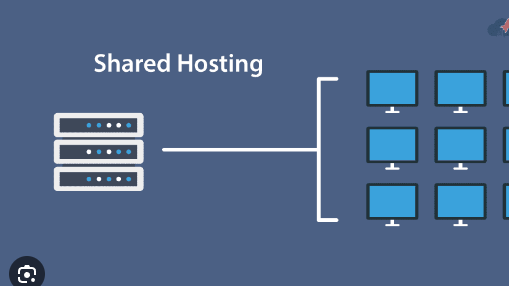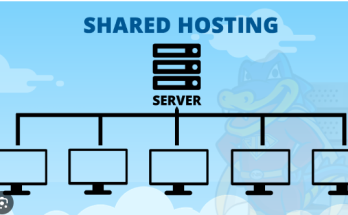In the vast landscape of web hosting options, shared hosting stands out as a popular and cost-effective choice for individuals and small businesses. This hosting model allows multiple websites to share resources on a single server, providing an affordable solution for those looking to establish their online presence. In this guide, we will delve into the intricate workings of shared hosting, exploring the advantages, limitations, and the step-by-step process of how it functions.
1. Introduction to Shared Hosting
Shared hosting operates on a simple premise: multiple websites share resources on a single server. Think of it as a communal apartment building, where each resident has their own space but shares common resources like electricity, water, and security. Similarly, websites hosted on a shared server share the server’s processing power, memory, and storage.
2. The Server Environment
At the heart of shared hosting is the server, a powerful computer that stores website files, databases, and other essential data. The server is equipped with hardware and software components designed to handle multiple website requests simultaneously. Web hosting providers manage and maintain these servers, ensuring optimal performance and security for all hosted sites.
3. Allocation of Resources
One of the key aspects of shared hosting is resource allocation. Each hosting account on the server is allocated a specific amount of resources, including CPU (Central Processing Unit) power, RAM (Random Access Memory), and storage space. These resources are shared among the websites hosted on the server, with each site receiving a fair share based on its hosting plan.
4. Shared Hosting Control Panel
To manage their hosting accounts, users are provided with a control panel. The control panel is a user-friendly interface that allows website owners to configure settings, upload files, create email accounts, and perform various other tasks. cPanel and Plesk are popular control panel options in the shared hosting environment, offering a range of features without requiring advanced technical knowledge.
5. Advantages of Shared Hosting
Shared hosting comes with several advantages, making it an attractive option for many users:
Cost-Effective: Shared hosting is budget-friendly, making it ideal for individuals and small businesses with limited resources.
Ease of Use: The user-friendly control panels simplify the management of websites, making it accessible even for beginners.
Maintenance and Support: Hosting providers handle server maintenance and support, reducing the burden on users and allowing them to focus on their websites.
6. Limitations of Shared Hosting
While shared hosting has its merits, it also has certain limitations:
Resource Limitations: Since resources are shared among multiple websites, a sudden spike in traffic on one site can impact the performance of others.
Security Concerns: The shared environment poses potential security risks, as vulnerabilities in one website may affect others on the same server.
Customization Restrictions: Users have limited control over server settings and configurations, as these are managed by the hosting provider.
7. Domain Hosting and DNS
For a website to be accessible on the internet, a domain name is required. In a shared hosting environment, users can register a domain through the hosting provider or use an existing domain. The Domain Name System (DNS) is responsible for translating human-readable domain names into IP addresses, allowing browsers to locate the correct server and display the requested website.
8. Website Files and Databases
Websites consist of files and databases that are stored on the hosting server. When a visitor requests a web page, the server retrieves the necessary files and data, processes them, and sends the result to the user’s browser. Shared hosting accounts typically come with storage space for files and databases, and users can upload and manage their content through the control panel.
9. Server-Side Technologies
Shared hosting supports various server-side technologies, including PHP, MySQL, and others. These technologies enable dynamic content, interactive features, and database-driven applications. Users can select the programming languages and database systems that suit their website requirements, often through the control panel provided by the hosting provider.
10. Load Balancing and Performance Optimization
To maintain stable performance in a shared hosting environment, hosting providers employ load balancing techniques. Load balancing distributes incoming web traffic across multiple servers, ensuring that no single server becomes overloaded. This optimization enhances the overall performance and reliability of websites hosted on shared servers.
11. Scalability and Upgrading Options
As websites grow and require more resources, shared hosting users have the option to upgrade their hosting plans. Hosting providers offer different plans with varying resource allocations, allowing users to scale their hosting environment according to their needs. This scalability ensures that websites can adapt to changing demands without the need for a complex migration process.
12. Security Measures in Shared Hosting
Given the shared nature of hosting environments, security is a paramount concern. Hosting providers implement security measures to protect websites from potential threats. These measures include firewalls, malware scanners, and regular server updates. While shared hosting is generally secure, users are also encouraged to take precautions, such as keeping their software up to date and using secure passwords.
13. Backup and Restore Procedures
Accidents and data loss can happen, so it’s crucial for shared hosting users to have reliable backup and restore options. Hosting providers often include automated backup services in their plans, allowing users to restore their websites to a previous state in case of unforeseen issues. Users should also consider implementing their backup strategies for an added layer of security.
14. Customer Support and Assistance
Quality customer support is a key factor in choosing a shared hosting provider. Reliable support ensures that users can quickly address any issues or concerns that may arise. Hosting providers typically offer support through various channels, including live chat, email, and phone. Before selecting a hosting provider, it’s advisable to research their support services and responsiveness.
15. Conclusion
In conclusion, shared hosting is a practical and accessible solution for individuals and small businesses seeking an affordable entry into the online world. Understanding the mechanics of shared hosting—from resource allocation and server environments to security measures and scalability—empowers website owners to make informed decisions about their hosting needs. By choosing a reputable hosting provider and implementing best practices, users can leverage shared hosting to build and maintain a successful online presence.
Understanding Shared Hosting: A Comprehensive Guide
Introduction: Shared hosting is a popular and cost-effective web hosting solution that allows multiple websites to share resources on a single server. This approach is ideal for individuals and small businesses looking to establish an online presence without the complexities and expenses associated with dedicated hosting. In this comprehensive guide, we will explore the inner workings of shared hosting, step by step.
Step 1: Server Architecture: Shared hosting involves hosting multiple websites on a single server. The server’s resources, such as CPU, RAM, and disk space, are shared among the hosted websites. This efficient use of resources helps keep costs down, making shared hosting an affordable option for many users.
Step 2: Hosting Control Panel: Web hosting providers typically offer a control panel, such as cPanel or Plesk, to manage shared hosting accounts. Users can access this interface to manage their website settings, domains, email accounts, and other hosting features. The control panel simplifies the management of various aspects of hosting, making it user-friendly for individuals with varying levels of technical expertise.
Step 3: Resource Allocation: Shared hosting providers allocate a specific amount of resources to each account. These resources include CPU usage, RAM, disk space, and bandwidth. While this shared model keeps costs low, it also means that the performance of your website can be influenced by the activities of other websites on the same server.
Step 4: Domain Hosting: Shared hosting supports multiple domain hosting, allowing users to host multiple websites under a single hosting account. Each domain can have its own website content, email accounts, and configuration settings. This flexibility makes shared hosting a convenient option for users managing multiple online projects.
Step 5: Security Measures: Security is a crucial aspect of shared hosting. Hosting providers implement security measures to isolate user accounts and prevent one user from accessing another user’s data. Additionally, providers often include features like firewalls, malware scanners, and regular security updates to enhance the overall security of the shared hosting environment.
Step 6: Performance Considerations: Since resources are shared among multiple websites, the performance of your website can be affected by the traffic and activities of other users on the same server. It’s essential to monitor your website’s performance and consider upgrading to a more robust hosting solution if your site experiences consistent high traffic or resource-intensive tasks.
Step 7: Technical Support: Shared hosting providers typically offer customer support to assist users with any technical issues or inquiries. This support may include assistance with server-related problems, domain management, and troubleshooting common website issues. Reliable customer support is crucial for ensuring a smooth hosting experience.
Conclusion: In conclusion, shared hosting is a cost-effective and user-friendly solution for individuals and small businesses seeking to establish an online presence. By understanding the server architecture, resource allocation, domain hosting, security measures, and performance considerations, users can make informed decisions when choosing shared hosting as their preferred web hosting solution.



